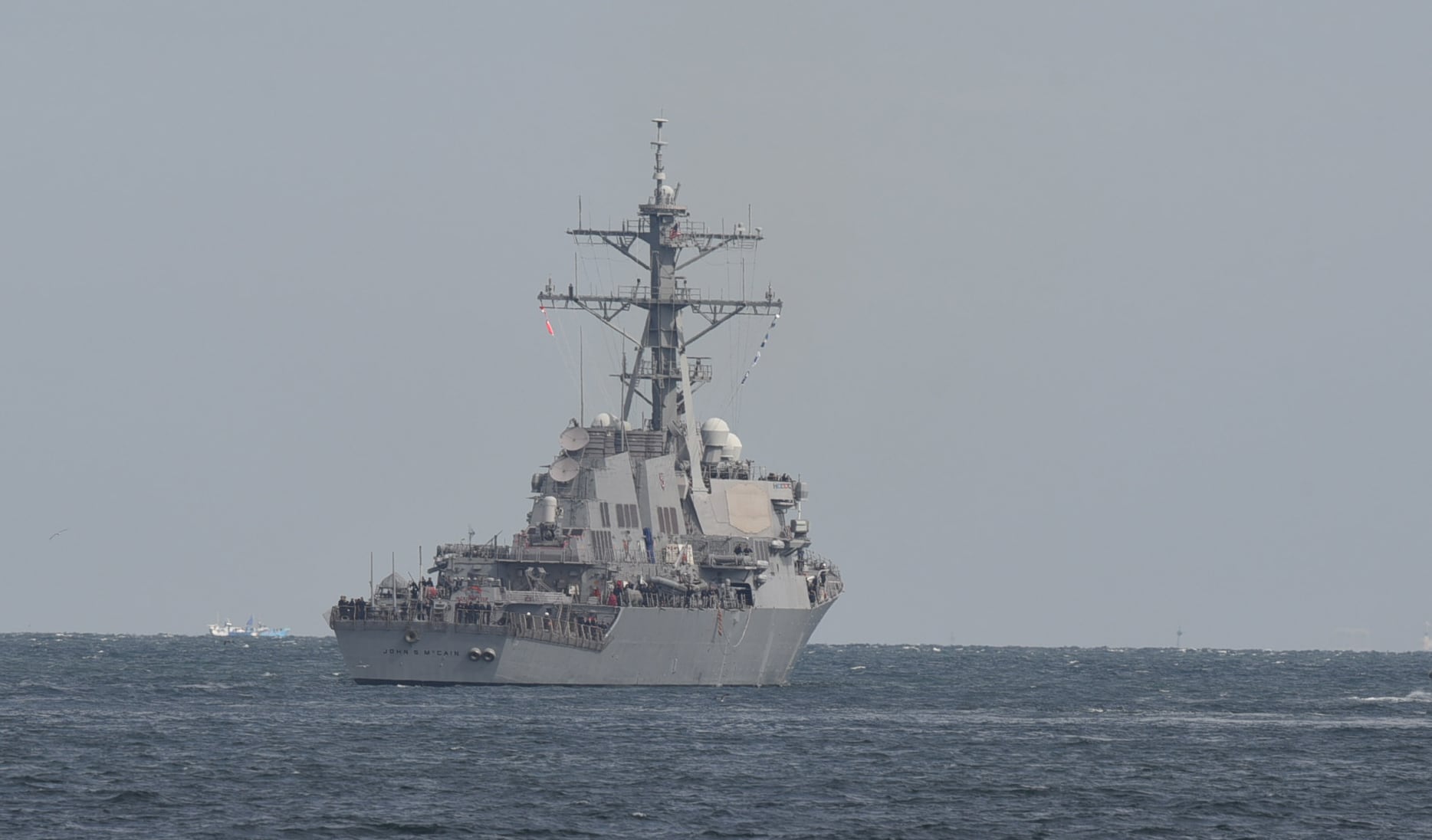ABOARD THE AIRCRAFT CARRIER GERALD R. FORD IN THE VIRGINIA CAPES — The U.S. Navy is trying to find an alternative to shooting down anti-ship missiles with other missiles, and the aircraft carrier Gerald R. Ford could prove useful in this pursuit.
A major difference with Ford over its Nimitz-class predecessors is its twin A1B nuclear reactors that produce more than three times the electrical power of the reactors on Nimitz — more than 100 megawatts.
That means Ford, with survivability questions looming over aircraft carriers, can support large, power-sucking equipment such as lasers, according to Capt. J.J. Cummings, the Ford’ commanding officer.
“When you talk about innovation in the Navy, this is where it lives,” Cummings said, referring to his ship. “We’re lighter — designed lighter — than Nimitz class.
“Nimitz class, she’s barreling down pretty good now with a lot of stuff on her, and her electric plant is almost at maximum capacity. We’re light and designed to have excess capacity in our electrical system to bring future systems on board.”
RELATED

That’s a big advantage for the class, and it’s one of the reasons the Navy has pursued the Ford class despite the controversies over buggy new technology and cost overruns. The Ford class is essential for the survivability of carriers, said James Geurts, the Navy’s top acquisition official.
“Part of the reason Ford is so important is that it gives you the flexibility to generate the next generation of systems you’ll need to ensure the carrier can continue to stay survivable,” Geurts said.
Killing missiles with missiles
Bryan Clark, a retired naval officer and analyst with the Center for Strategic and Budgetary Assessments, said Ford could use a boost in the survivability department and the Ford’s powerful reactors could help them get there.
“To improve the self-defense on carriers, you could put lasers on there to support that short-range, self-defense capacity,” Clark said. “Because the big problem with lasers right now is power management. You can build a three or four hundred-kilowatt laser, but for one, it’s a big footprint so you have to find a ship big enough to put it on; and two, you have to have the power to actually supply it. So you’re going to need a capacitor bank somewhere on the ship or you need a generator big enough to provide it continuously. On the Ford, you’d get that."
Clark has argued for years that the Navy needs to get away from trying to shoot down missiles with missiles because a saturation attack from Russia, China, Iran, North Korea or anyone else who might have cause to attack a U.S. Navy ship could force a cruiser or destroyer to expend all its missiles and still not have defeated the threat.
RELATED

That’s where shorter-range missiles such as the Evolved Seasparrow Missile, which can be packed four per cell in a vertical launch system, and lasers can have a big impact, even if it means the ship has to let missiles get uncomfortably close to the ship before it’s taken down.
“I think lasers could make a difference for Ford because the technology is pretty mature, you could fit it on the ship and it would address a big challenge for carriers, which is air defense,” Clark said. “You could put several lasers on there and really give a boost to your air defense capacity.”
However, it’s unlikely lasers could address all threats faced by carriers, Clark said.
“It would be effective for cruise missiles up to maybe the supersonic cruise missiles,” Clark said. “Of course, it would also work against small boats and things like that. It may not work that well against hypersonic missiles or ballistic missiles.”
David B. Larter was the naval warfare reporter for Defense News.








